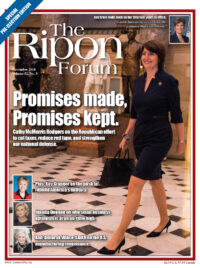
The Republican Party has been strong in Wisconsin under the leadership of Governor Scott Walker, but that may be changing, in part due to intraparty tensions.
The respected Almanac of American Politics 2018 edition emphasizes vexed relationships in the 2016 election campaign between Republican presidential nominee Donald Trump and state leaders, in particular Congressman Paul Ryan, Speaker of the U.S. House of Representatives.1
This year the Democrats have nominated Wisconsin School Superintendent Tony Evers for Governor. To this point, he has a narrow lead in the polls. Governor Walker has won two elections for his current office, and survived a recall initiative. He has earned a reputation as a ferocious campaigner. He may win yet again, but there is no assumption of any Republican advantage.
The massive new investment in Southeast Wisconsin by Foxconn Technology Group is both an economic opportunity and source of controversy. Foxconn is the trade name of Hon Hai Precision Industry Company based in Taiwan, the world’s largest producer of electronic contract products. Wisconsin’s financial underwriting of approximately $4 billion for Foxconn, along with the disruptions accompanying associated construction, has caused controversy.
The Democrats appear solidly ahead in the United States Senate race. Incumbent Senator Tammy Baldwin holds a steady lead of 10 percentage points over conservative Republican challenger State Senator Leah Vukmir.
Wisconsin reflects the mixed political party trends across the nation.
Kenosha County reflects both traditional Democratic Party roots and recent Republican strength. Ryan has represented Wisconsin’s First Congressional District, which includes Kenosha, since 1999 but is not running for reelection.
Previously, Democrat Les Aspin held the First District seat from 1971 to 1993. A respected defense policy expert, he served briefly as Secretary of Defense early in the administration of President Bill Clinton. Democrat Peter Barca was Aspin’s immediate successor in the House.
The Republican Party nominee for the First District seat is Bryan Steil, a corporate lawyer. Previously, he served on Ryan’s staff, and the Speaker has endorsed him.
Democratic Party nominee Randy Bryce is a union member and industrial worker. The United Auto Workers remains a presence in the region. Historically, Kenosha was a major center of the auto industry, especially assembly plants.
Despite Ryan’s lengthy success in the 1st District, the strength of the Democrats is also notable. In 2016, Donald Trump carried the county by less than 1,000 votes. By contrast, Barack Obama in 2012 had a vote margin of nearly 10,000.
Kenosha County Executive Jim Kreuser and Kenosha Mayor John Antaramian served as Democrats in the State Assembly. Democratic State Senator Bob Wirch emphasizes his labor union background. He survived an aggressive 2010 Republican attack campaign to defeat him.
Kenosha County played a prominent role in the 2016 presidential primary campaign. Senator Bernie Sanders, Democratic contender for the nomination, spoke at Carthage College in Kenosha in March of that year to an overflow crowd. Along with the college community, the audience was comprised of a large number of working people.
Current polls indicate Democrats will do well in the state as a whole, and Republicans in the First District.
Sanders won the Wisconsin primary, defeating Hillary Clinton, who did not campaign in the state. The assumption that Wisconsin would be part of an upper Midwest “blue wall” that would deny Trump a presidential election victory proved illusory. He carried the state by just over 22,000 votes.
Local history was a factor in the visit of President Donald Trump to Snap-on Tools in Kenosha in April 2017. During the visit, he announced an executive order to “buy American, hire American.” Snap-on is an American institution emphasizing quality workmanship, though today the company is global in hiring, production and sales.
Wisconsin historically was in the forefront of labor union organizing and industrial reform, along with Progressive Republican politics and policies. In 1865, a local chapter of the Molders Union originated in Milwaukee. In 1886, labor protest across the nation demanded an eight-hour workday. Milwaukee saw one of the largest efforts. In 1933, UAW workers sat down on the job at Nash Motors in Kenosha. Republicans led by Robert M. La Follette, who served as both Governor and U.S. Senator, achieved a law requiring state primary elections, first held in 1906.
Wisconsin reflects the mixed political party trends across the nation. Current polls indicate Democrats will do well in the state as a whole, and Republicans in the First District. However, polls were wrong in the 2016 elections.
Arthur I. Cyr is the A.W. and Mary Margaret Clausen Distinguished Professor of Political Economy and World Business, and Director of the Clausen Center for World Business, at Carthage College. To read Professor Cyr’s earlier analysis of the political environment in Kenosha County that appeared in the June 2017 edition of the Forum, please click here.




